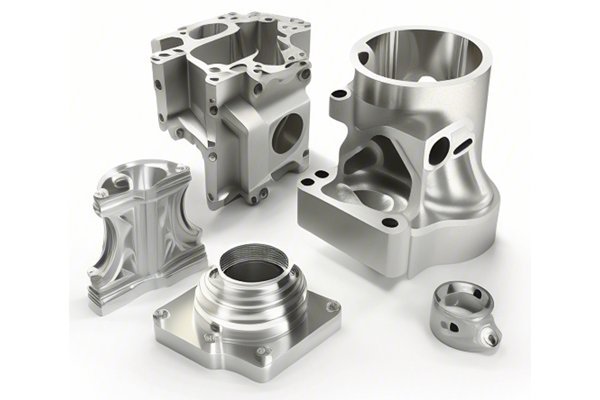: The Precision in Prototyping
Did you know that CNC (Computer Numerical Control) machining processes can achieve tolerances as tight as ±0.001 inches? This level of precision has revolutionized the prototyping and manufacturing industries, allowing engineers to create intricate models that serve as the foundation for final products. CNC machining is not just a method; it’s a blend of technology, artistry, and engineering that ensures consistency and accuracy, which are vital in prototype production.
In this comprehensive guide, we’ll dissect the techniques and technologies used in CNC machining that facilitate precise tolerances and consistent quality. Given the competitive nature of manufacturing, understanding these concepts is essential for any business looking to innovate, save time, and reduce costs.
Chapter 1: Understanding CNC Machining
1.1 What is CNC Machining?
CNC machining is a manufacturing process where pre-programmed computer software controls the movement of factory tools and machinery. This process can be used for a variety of systems and machines, such as mills, lathes, routers, and grinders.
1.2 The CNC Machining Process
Chapter 2: Factors Influencing Precision and Quality in CNC Machining
2.1 Machine Calibration
Regular calibration of CNC machines is crucial for precise machining. Calibration ensures that the machinery delivers accurate cuts by adjusting the machine’s settings based on verified measurements.
2.2 Tool Selection
Choosing the right cutting tools can significantly impact the precision and durability of prototypes. The tool’s material and geometry dictate its ability to perform with minimal deviation.
Tool Material: HSS (High-Speed Steel), carbide, or ceramic tools are commonly used, with carbide providing better longevity and stability.
Tool Geometry: The geometry affects chip removal, heat management, and overall cutting efficiency.
2.3 Material Considerations
Different materials behave differently during the machining process. Understanding the properties of various metals and plastics helps in choosing appropriate speeds, feeds, and tooling.
2.4 Fixture Design
Proper fixturing is vital for maintaining the workpiece’s position and preventing movement during machining. Innovative fixture designs can reduce machining errors and ensure consistent quality.
Chapter 3: Technology Advancements Enhancing Precision
3.1 CNC Technology Evolution
The evolution of CNC technology has introduced numerous advancements targeting precision and efficiency. From 2D applications to now highly sophisticated 5-axis CNC machines, technology has made it easier to achieve complex prototypes with tight tolerances.
3.2 Software Improvements
Advanced CAD and CAM software offer features that enhance precision, including:

Chapter 4: Quality Control Measures
4.1 In-Process Monitoring
Real-time monitoring systems can ensure that any deviation from tolerances is detected immediately.
4.2 Final Inspection
At the end of the production process, implementing a robust quality assurance protocol using techniques like:
Chapter 5: Best Practices for Achieving Performance and Precision
5.1 Training and Skill Development
Regular training ensures that operators are familiar with the latest technologies and methodologies, which directly impacts the precision of the work.
5.2 Maintenance Schedules
Establishing regular maintenance schedules can prevent machine degradation that leads to compromised quality.
5.3 Lean Manufacturing Principles
Applying lean production techniques helps minimize waste throughout the CNC process, allowing for better resource utilization and cost-efficiency.
Chapter 6: Real-World Applications of CNC Machining in Prototype Production
6.1 Aerospace Industry
CNC machining plays a pivotal role in the aerospace sector, where precision in every component is non-negotiable. Prototypes developed for engines, brackets, or airframes must withstand rigorous standards.
6.2 Automotive Industry
In automotive engineering, CNC machining is integral to producing precise engine components, ensuring high performance and safety standards while reducing lead times.
6.3 Medical Devices
Medical device prototyping requires an extreme focus on accuracy and quality to comply with safety regulations, making CNC machining essential in developing tools and machinery.
: The Importance of Precision in Prototype Production
In conclusion, CNC machining is crucial for companies looking to produce prototypes with precise tolerances and consistent quality. By employing cutting-edge technology, understanding the nuances of materials, implementing stringent quality controls, and adhering to best practices, businesses can enhance their prototype production process.
This detailed exploration underlines that achieving precision goes beyond merely utilizing advanced machines. It involves a holistic approach that includes training, technology, and thoughtful resource management. As industries continue to evolve, maintaining a stronghold on CNC techniques could mean the difference between leading the market and getting left behind.
As you reflect on the insights from this blog, consider how you might incorporate these techniques into your own procedures. Precision in prototyping isn’t just desirable; it’s the defining factor that can influence your products’ success in competitive markets.






